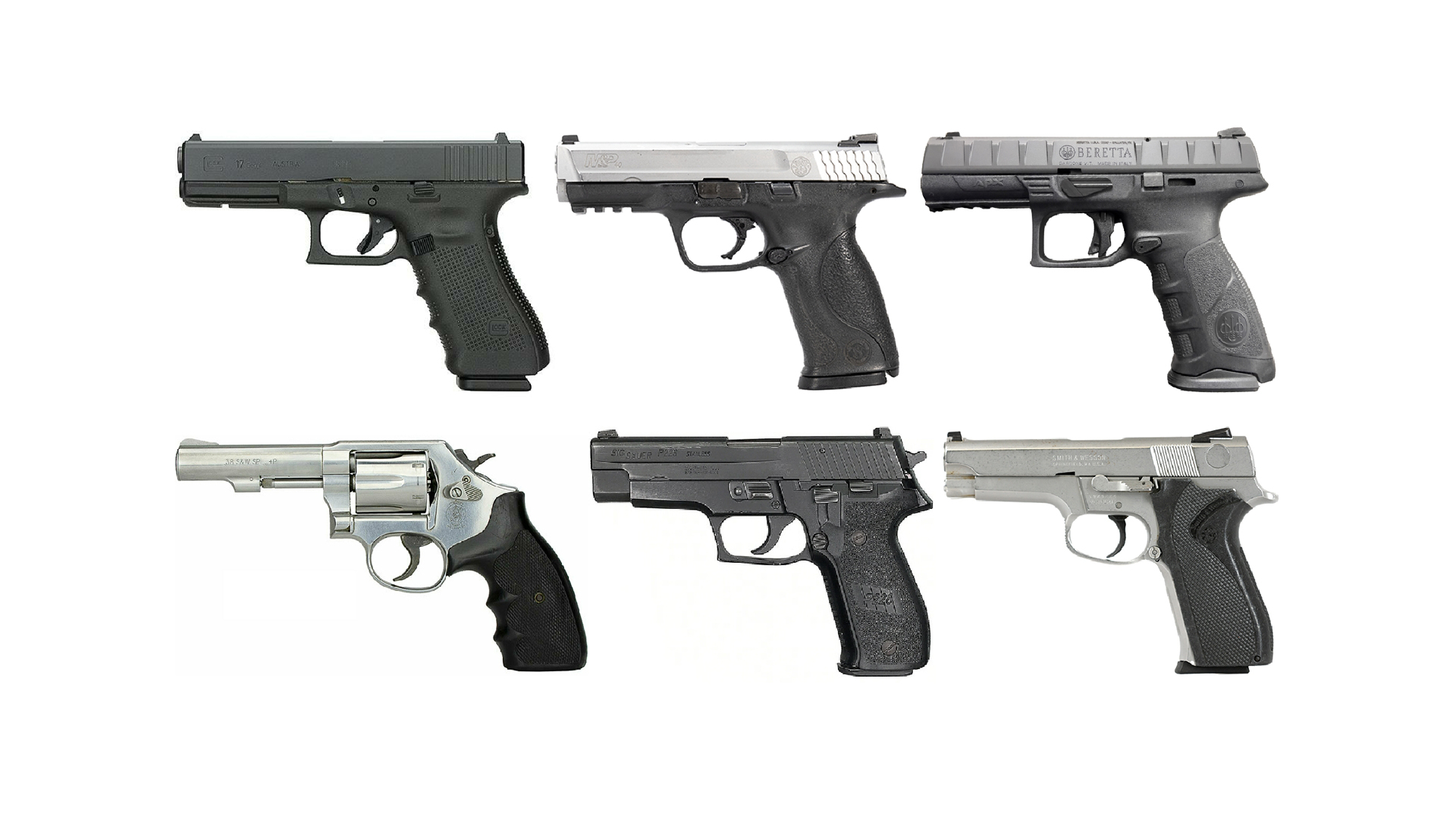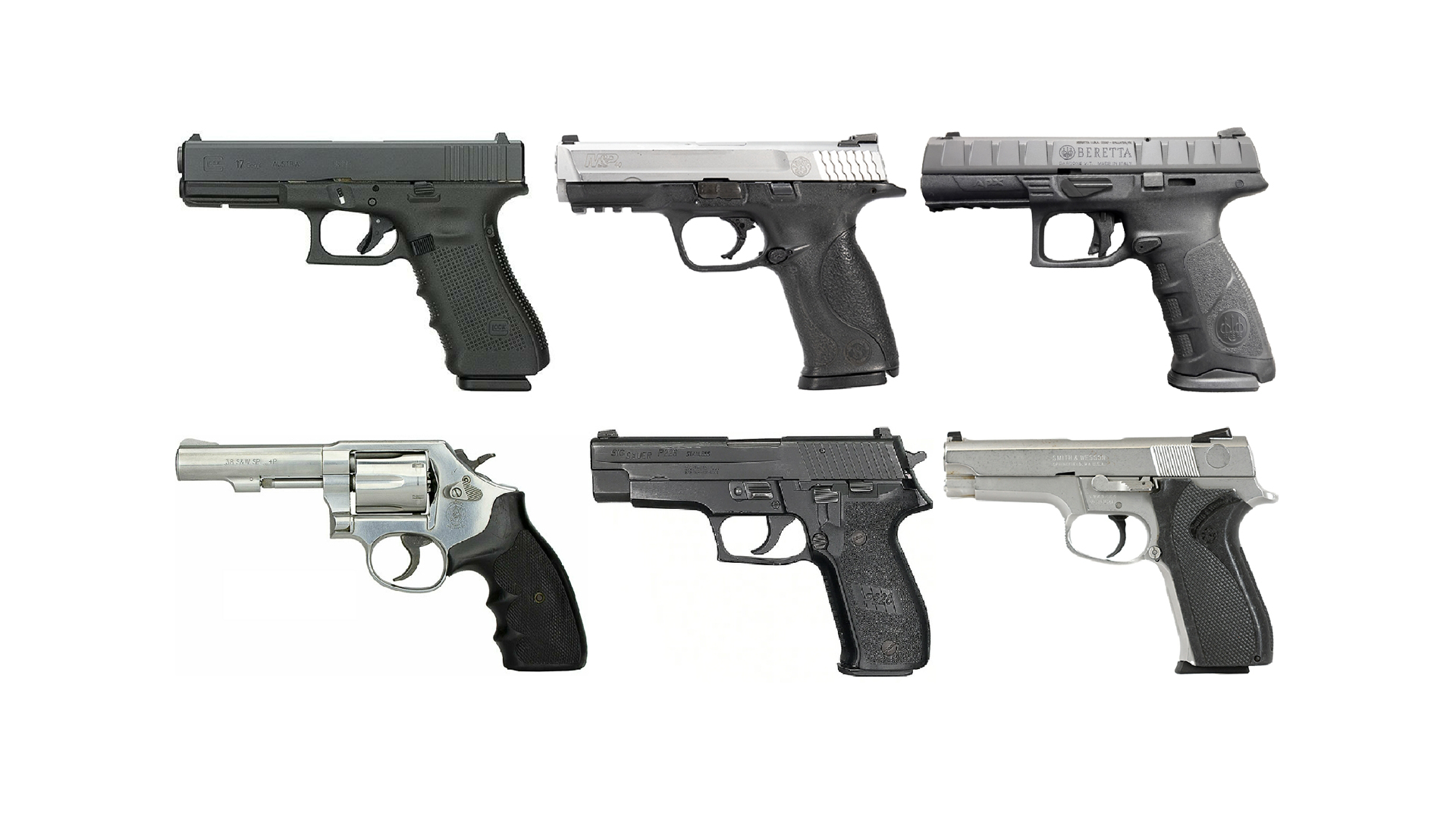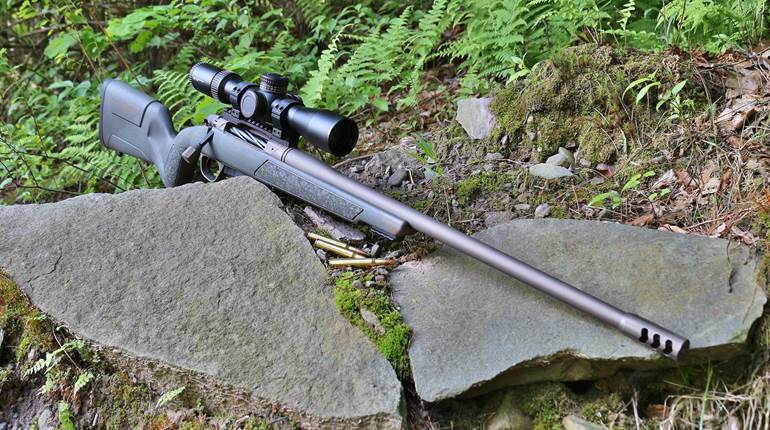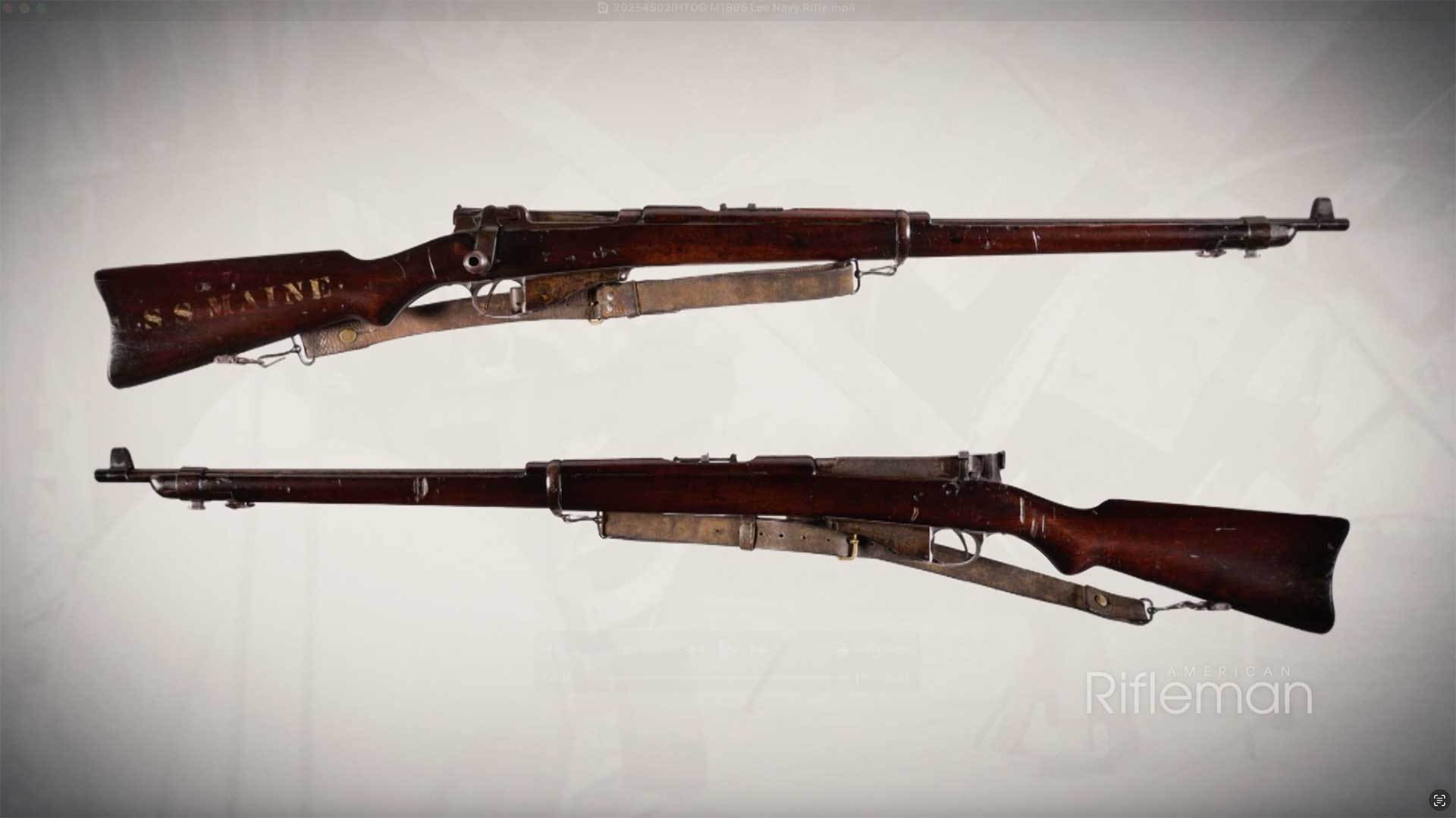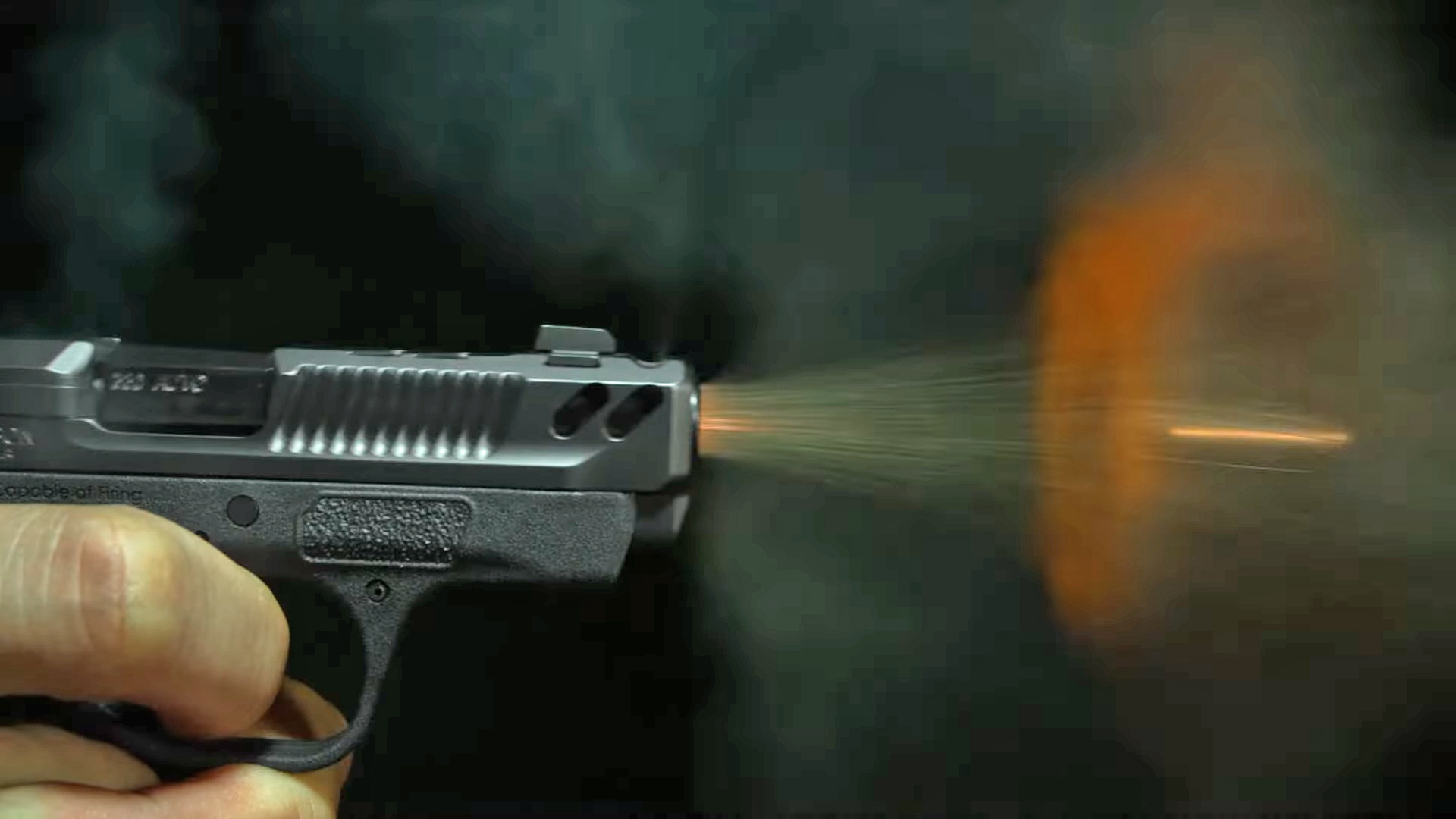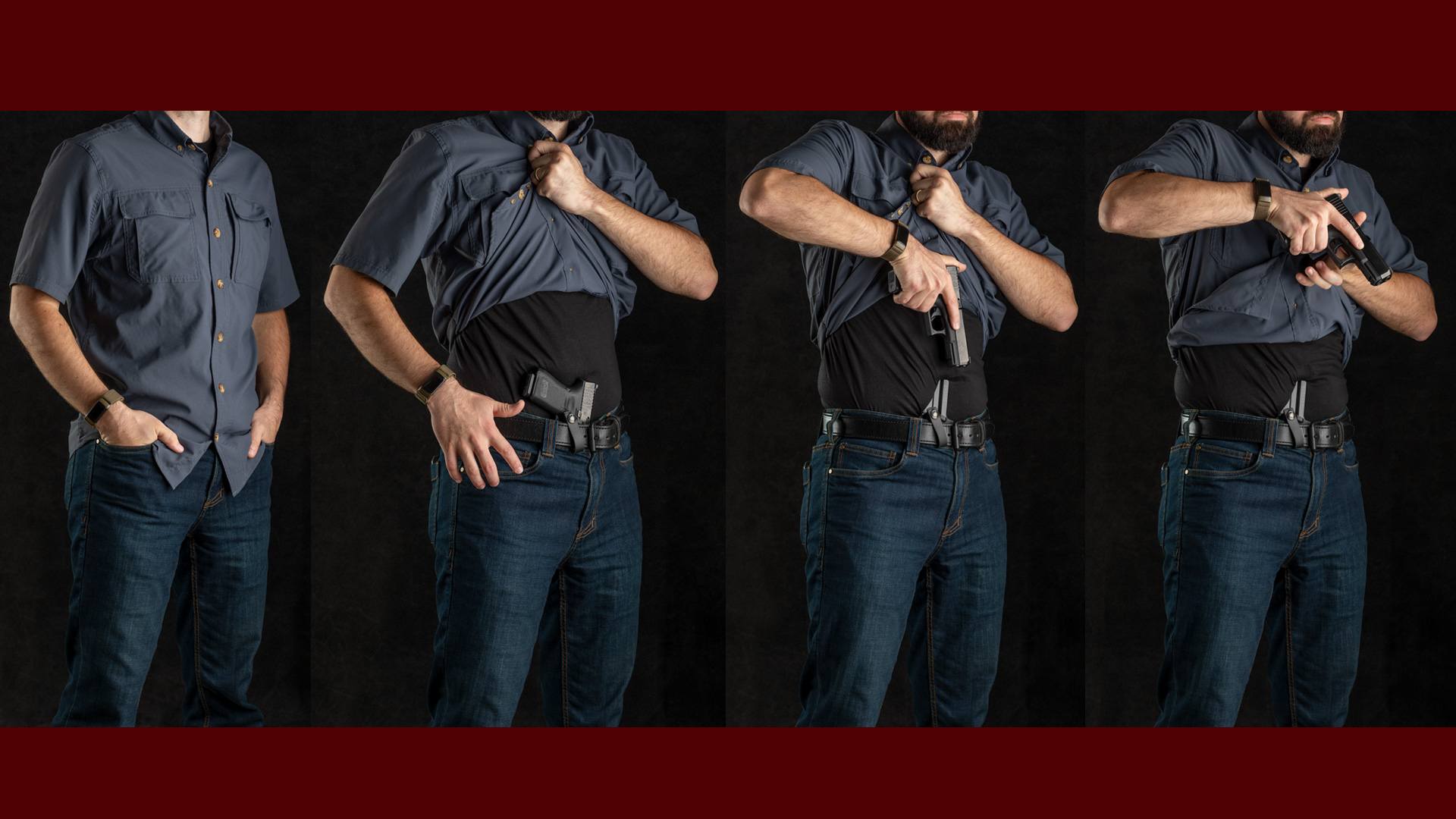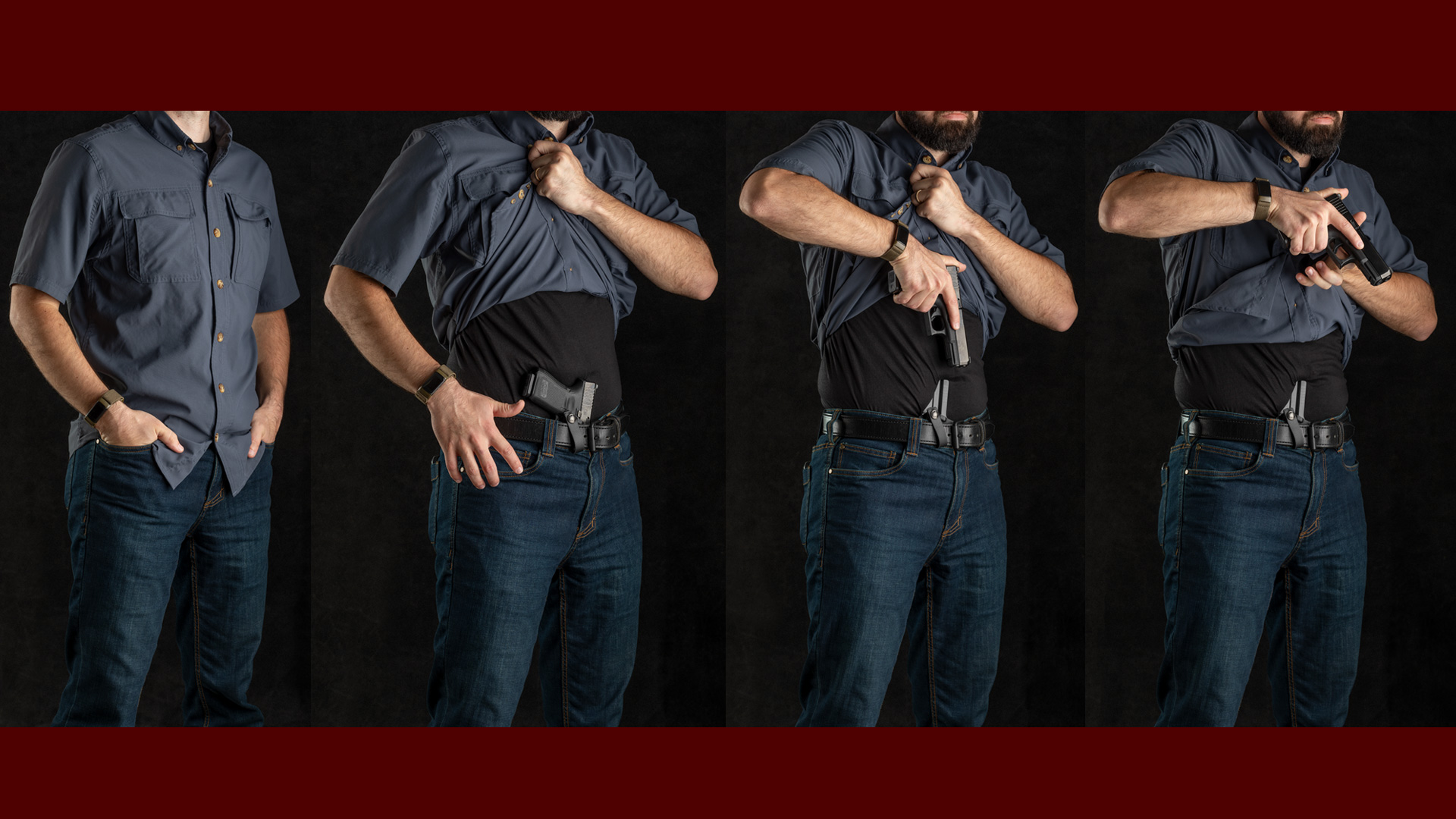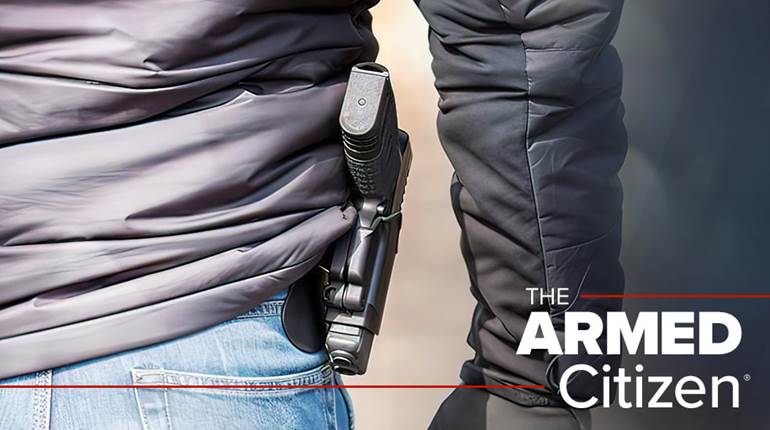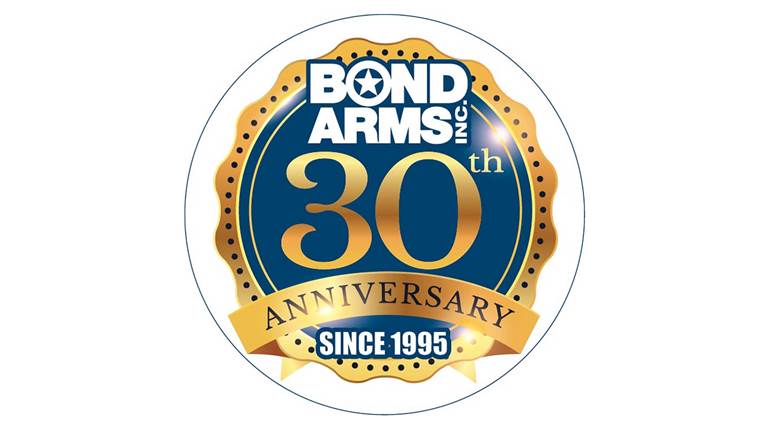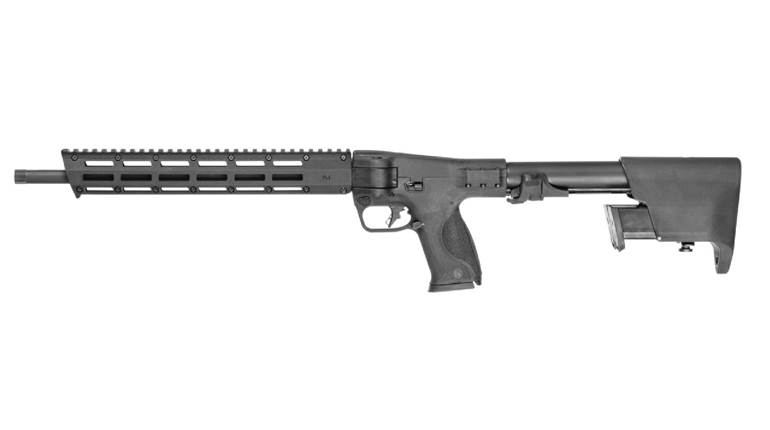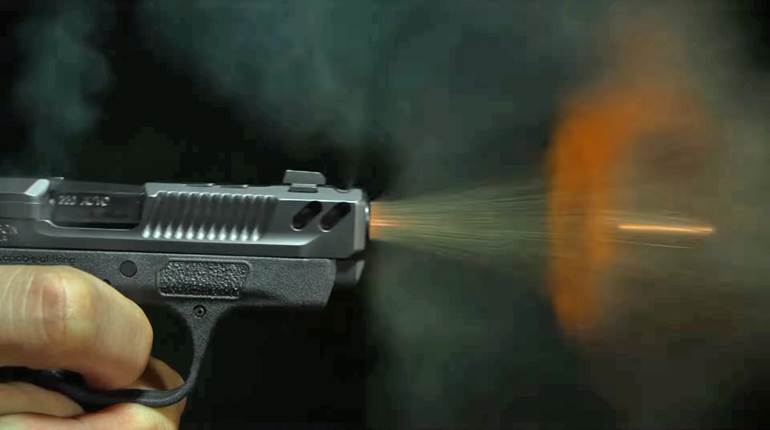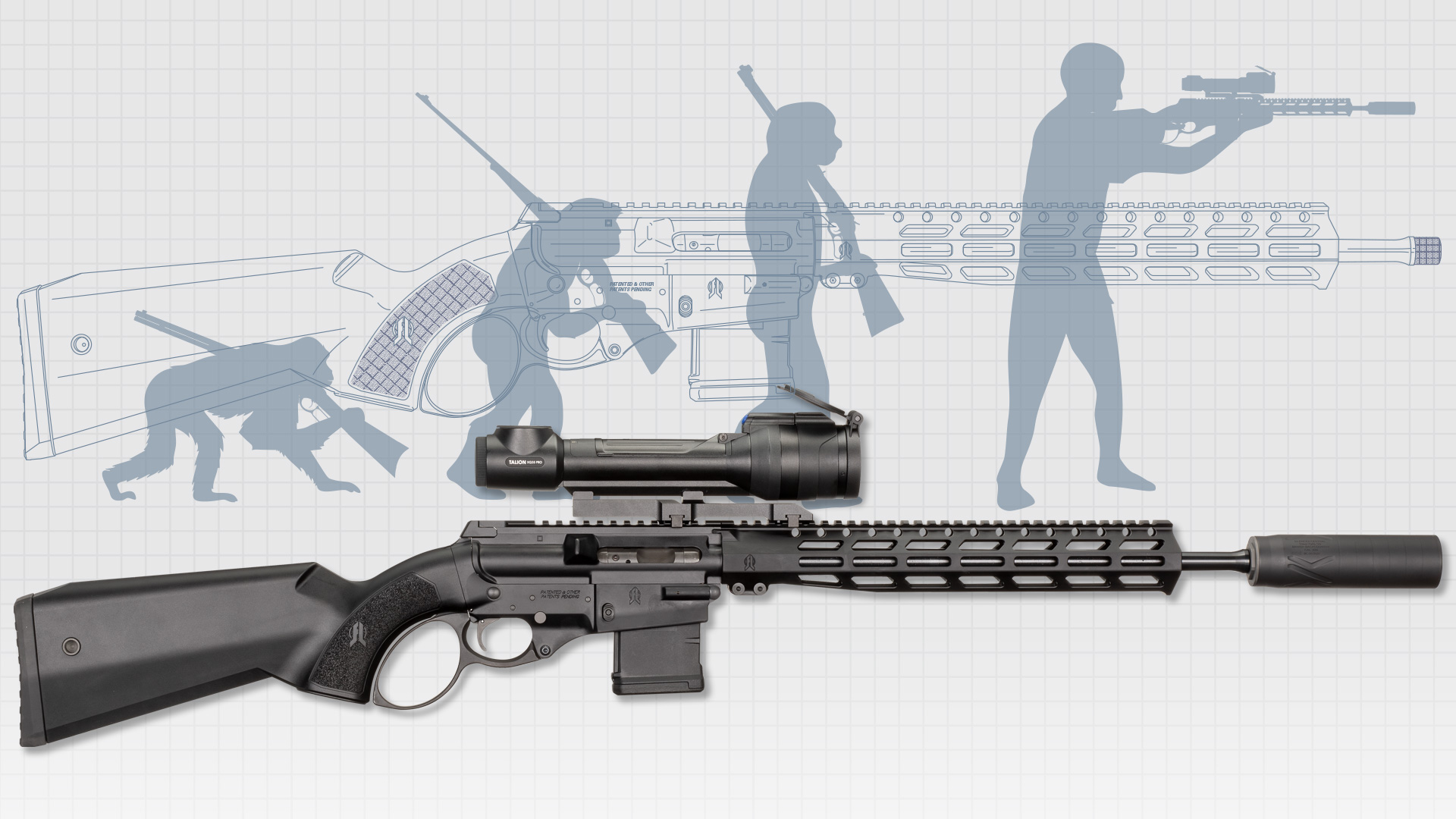
Modern features such as a threaded barrel, an M-Lok-clad handguard and a full-length Picatinny rail make the FightLite Herring Model 2024 capable of accommodating a wide array of equally modern optics and accessories—such as Silencer Central’s compact-but-effective Banish Backcountry suppressor and Pulsar’s user-adjustable Talion XQ35 PRO thermal riflescope.
In hindsight, this was always fated to happen. Lever guns and AR-platform rifles are both just too deeply ingrained within our national subconscious, gun-grabbers are just too fixated on the low-hanging fruit of semi-automatic rifles and necessity is just too much the mother of invention for the AR/lever-action hybrid to not have eventually become a thing. And considering the many advantages baked into such a melding—and that at least three enterprising American companies are already simultaneously tackling the concept from slightly different angles, with more sure to follow—guns of this type seem to be poised to become the much-needed next big step in lever gun development.
Which is good news because, frankly, prior to the last few years, the American lever-action rifle had grown a bit long in the tooth. So, it absolutely drips with irony that it’s the tactical lever-action, which five years ago was viewed with near-universal scorn by lever gun purists, that has not only rejuvenated the flagging platform, but now appears to stand as the most natural next stage in its evolution.
The tactical lever gun craze (see August 2024, p. 44) started minimally with a few manufacturers tepidly dipping their toes into the waters with black-finished models that were in no other way “tactical” and slowly escalated from there. By contrast, lever-action ARs—particularly the Herring Model 2024 by FightLite Industries—cannonball into the deep end of the tactical market unapologetically. The new FightLite pairs the modularity, prodigious firepower and mission-customizable versatility of its gas-powered parent with the intrinsic reliability and suppressor-friendliness of its muscle-powered forebear to create something novel. Something eminently useful both inside and outside the home, relatively quiet and safely off the radars of the hoplophobiacs—for now at least.
The most conventional thing about the FightLite is its name. Why 2024? The answer should become fairly apparent when you consider that it came out late last year to join a corner of the rifle market that already includes the Winchester 1873, Marlin 1894 and Savage 1899. So, why Herring? Because Geoffrey Herring founded ARES Defense Systems in 1997, created its FightLite Industries division in 2016 to focus specifically on small-arms technologies and developed this rifle design.
First announced in 2023, the company delayed the launch of its new platform to make some late changes and to file a number of patents—as this rifle introduces no small amount of 21st century innovation into what is largely a mid-19th century method of operation. I reached out to Geoffrey early and often throughout the past year, eager to get my hands on a rifle that makes a great deal of sense to me, and he was gracious enough to have one of the first production models sent my way for testing.
In the Model 2024, FightLite has created a firearm that is modern in appearance and well-equipped for use with equally modern accessories. The design leverages the AR pattern to improve upon the architectural limitations of the traditional lever gun and mitigate most of the shortcomings that have historically hamstrung its performance—while retaining its beloved form of manual operation.

While the Herring Model 2024’s upper receiver assembly is largely based on the AR-15 pattern, it lacks a gas system and other components only needed for semi-automatic function. And while its bolt carrier group (right) has been re-designed for lever-powered function, the rifle uses a standard, eight-lug, AR-style bolt and benefits from a primary extraction cam (arrow) for improved reliability.
Whether in the hands of an experienced black-rifle shooter or a longtime lever gun appreciator, the rifle’s control scheme shouldn’t be tricky for either group to figure out, even if it, too, is a distinct hybrid of its parents. The manual safety, located just forward of the trigger guard where it can be deactivated by an extended trigger finger, is of the crossbolt type common to those lever-actions featuring manual safeties. Meanwhile, depressing a familiar button on the right side of the lower receiver forward of the safety drops the STANAG AR-15 magazine from its well.
For those already acquainted with FightLite’s catalog, the Model 2024 is an arm-operated version of its Sport Configurable Rifle (SCR)—a semi-automatic design that intentionally avoids those features that make gun-grabbers go all apoplectic by retaining sporting-rifle ergonomics. As a result, it has been often imitated in recent years by other makers attempting to navigate the patchwork gun-control laws of all 50 states with their own “ranch-rifle” ARs. Foundationally, the new rifle consists of a specially designed lever-action lower receiver onto which nearly any standard-issue AR-15 upper receiver can be installed in typical fashion via traditionally placed retained pivot and takedown pins—although the factory upper bears some subtle differences.
My test unit was chambered in .300 Blackout, as I see suppressibility as one of the prime benefits of the rifle’s manual operation, but .223 Wylde, 350 Legend and .450 Bushmaster versions (all offered with either black, flat dark earth or olive drab green polymer buttstocks) are also available at launch. However, given that the Model 2024 inherits much of the same interchangeability that has made the AR-15 the most versatile rifle of the past several decades, while experimenting with it, my sample also spent time as a straight-walled 350 Legend and a bull-barreled .204 Ruger using my own uppers.
But, given that each AR-15 upper that will be used with the FightLite lower will need to have its bolt carrier group replaced for lever-action compatibility—and then converted back again to return to semi-automatic use—swapping uppers isn’t quite as plug-and-play as with a regular self-loading lower. In all three cases, because the .204 Ruger and 350 Legend share the .300 Blackout’s 0.378" case head, I was able to use FightLite’s factory bolt; other chamberings may require a bolt change.
The AR Part
With a few small exceptions, the Model 2024’s upper receiver could easily be mistaken for a standard AR-15 assembly—because it essentially is. Of course, the bolt carrier has been re-designed for manual operation, but beyond that, to save weight, the upper merely lacks a gas system, a dustcover and a forward assist and has had its charging-handle recess plugged. AR-15 weights can vary significantly (depending on your barrel and furniture choices), but 7 lbs. is a pretty safe mean for a 16"-barreled carbine. By dispensing with the parts mentioned above necessary only for semi-automatic function, FightLite has trimmed the Model 2024 down to just 5 lbs., 11 ozs.—and it feels more lithe and lively in the hands because of it.
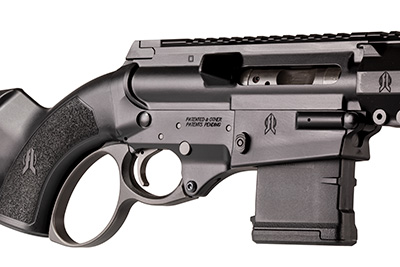
The Model 2024’s control scheme includes a crossbolt safety and a push-button magazine release. Note the lack of a dustcover or a forward assist and that the charging handle recess is plugged.
Otherwise, the receiver, handguard and barrel are all typical AR-15 components, although the barrel lacks gas ports. The free-floating aluminum fore-end measures 13.5" in length. An abundance of M-Lok slots at 3-, 6- and 9-o’clock and a full-length Pic rail atop the receiver and handguard allow for the easy and organic integration of accessories such as optics and lights—including some types of attachments that have previously never really had a presence within the lever gun space—like foregrips, bipods and night-vision/thermal devices.
The 4150V chrome-moly-vanadium-steel barrel measures 16.25" in length with a noticeably thin (0.56") profile for most of its length before “belling” at the muzzle to accommodate 5/8x24 TPI threading. A knurled thread protector was installed at the factory, and the barrel was run deviceless for accuracy testing, but most of the rest of the field testing benefited from Silencer Central’s compact-but-effective Banish Backcountry.
Most major differences in the 2024’s upper lie with its bolt carrier, the tail end of which diverges considerably from those of both the AR and the SCR. Semi-automatic bolt carriers need to be untethered from the guns around them enough to freely move rearward under the force of the ignition gases and then forward again under spring pressure. However, in the lever-action, a pair of lever links connect the top-rear corner of the BCG to the lower’s lever—with the bolt locked into the barrel extension, and the action held closed, until the shooter acts to unload the chamber and load a fresh round.
At the rear of the BCG is a part that FightLite calls the primary extraction cam. As the lever’s downstroke begins, this patented component cams against a hardened steel block in the lower receiver as the carrier is drawn rearward. This creates a 6:1 mechanical advantage to more reliably unlock the bolt from the barrel extension, allowing the sliding-plate extractor on the bolt head’s right side to pull the spent case from the chamber before it is expelled through the ejection port by a plunger-style ejector in the bolt face. The upstroke then propels the BCG forward again to strip a cartridge from the magazine and push it into the awaiting chamber.
Due to the two lever links connecting the BCG to the lever, separating the upper and lower receivers first requires removal of the lever connecting pin with a punch, after which popping the takedown pins will cause one link to stay with the carrier and the other to remain attached to the lever as the receivers part ways. It technically is possible to detach the upper without punching out this pin, but it’s much easier to simply remove it.
In addition to the weight savings provided, elimination of the gas system also results in a cleaner-running action that requires far less maintenance than a direct-impingement AR. The lack of either an AR-style charging handle or a lever gun-style exposed hammer allows optics to be mounted exceptionally low to the bore—which paired well with the greater drop in the stock’s comb. However, due to this lack, there is no way to visually confirm whether the hammer is cocked.
The Lever Part
The barrel-clinging tubular magazine has always been the lever gun’s greatest limiting factor, hindering its capacity, accuracy and the ballistic potential of its ammunition while greatly complicating the reloading process. By evolving past its use to feed instead from a detachable box, the Model 2024 takes full advantage of the box’s benefits compared to a tube—which are numerous and considerable—altering the entire complexion of the platform.
Foremost, of course, is a significant capacity advantage. While my test sample shipped with only one five-round, limited-capacity Magpul magazine, it ran equally well with all .300 Blackout-compatible magazines on hand, including some 20-round aluminum Duramags and polymer 30-rounders from a half-dozen manufacturers. And, centered as the magazine well is, the rifle balanced nicely with each of them. Recharging the gun back to full capacity is also orders of magnitude quicker and easier (drop box, insert new one) than singly loading a tubular magazine. Finally, a box magazine allows the antiquated, finger-pinching side gate to be omitted entirely.
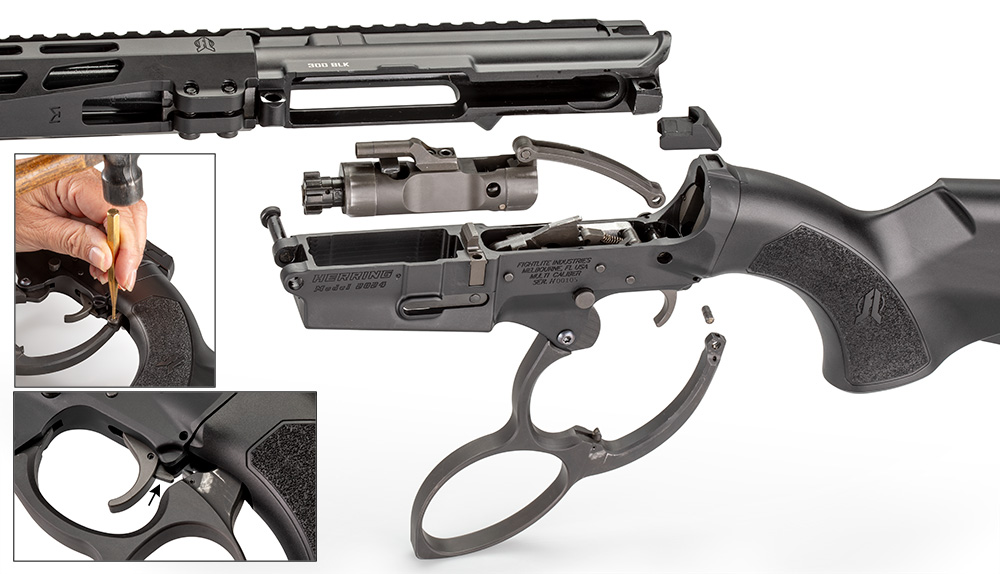
First removing the lever connecting pin (l., top) allows the Model 2024’s receivers to be much more easily separated. A trigger-block grip safety (l., arrow) in the back of the trigger keeps the rifle from firing unless the action is securely closed.
Rather than locked into the same half-dozen rimmed cartridges of similar trajectory that traditional lever-action designs favor, the FightLite is potentially open to the entire gamut of AR-15 chamberings. If it fits an AR-15-length magazine, and you have a correspondingly chambered upper and bolt, the Model 2024 lower is game—from the varminting speedsters to the bear-stopping thumpers to the new breed of ballistically optimized cartridges such as 6 mm ARC. A box magazine likewise doesn’t limit the bullet profiles of the rounds contained within it in the same way that a tube susceptible to chain detonations does—synergistically allowing the use of aerodynamically efficient projectiles with trajectories that most lever gun loads can’t approach.
And, as alluded to before, the FightLite makes a far better suppressor host than a semi-automatic because its action stays closed until the shooter chooses to open it—eliminating one of the two sources of a shot’s noise while protecting the breech from ignition contaminants. Its manual operation also sidesteps the AR’s potential finickiness with some loads, placing the onus of reliability squarely on the proper technique of the shooter.
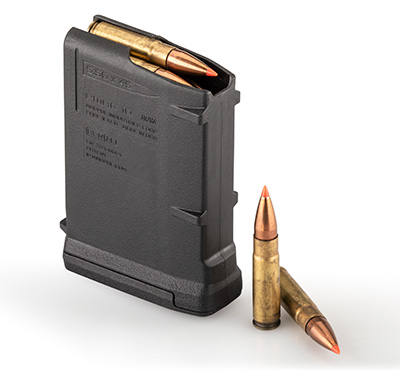
Between its 7075-T6 aluminum construction and similar takedown pins, magwell and magazine-release button, the FightLite’s lower receiver is familiar enough to be considered AR-esque—even despite its more streamlined dimensions, push-button safety, lack of a bolt-release lever and the fact that it terminates in a shotgun-style buttstock. A big-loop lever tightly hugs the inner radius of the pistol-gripped stock, the lever itself measuring 1/2" wide, which is considerably broader than other designs I’ve owned and tested—the extra real estate contributing to surprising comfort when running the rifle rapidly. Unlike your standard tube gun, but like your standard AR, the action does lock open (and the lever down) on an empty magazine. Ammunition can be cycled through the rifle when the manual safety is activated.
Rear of the lower receiver is a polymer buttstock based on a modified Remington Model 870 stock, a shape that generations of shotgun shooters have found to be comfortable and quick to the shoulder. The fixed stock locks the shooter into a 13.25" length of pull, which is pretty short for a lever gun, but I did not find it to be an obstacle to the fast, comfortable operation of the rifle. Texturing akin to skateboard tape and the company logo have been molded into both sides of the wrist. Bilateral QD sling cups make simple the installation of a single-point sling, and the M-Lok up front also allows for a two-point setup.

The Model 2024’s trigger, a modified version of the SCR’s, has more in common with those of the AR platform than the lever guns of yore. The unit on my test sample had one stage, releasing at 4 lbs., 4 ozs., of pressure after about 1/8" of take-up and a slight amount of creep. This positions it well for close-range defensive use yet isn’t so heavy that it would be a huge impediment on longer shots that require more precision.
Like many lever-actions, a trigger-block grip safety prevents the trigger from releasing unless the lever is seated fully against the stock and the action is locked. Unlike many lever-actions, this safety is incorporated into the back of the trigger. Lastly, if you’re not in love with any of FightLite’s inaugural complete-rifle SKUs, lowers and BCGs will be available packaged together—allowing end users to build a rifle of their own around a preferred chambering/upper.
Putting It All Together
Lever gun accuracy has historically been constrained by the pattern’s typical reliance on barrel-mounted tubular magazines and rear locking lugs—neither of which you’ll find in the FightLite 2024. Between the increased accuracy potential of the free-floating barrel and AR-style lock-up and the ballistically superior bullets made useful by the discrete box magazine, lever-action ARs have the potential to be among the most accurate lever guns ever made.
During a formal evaluation using Rifleman’s five-shot, five-group accuracy protocol with two hunting loads and an FMJ, the Model 2024 comported itself quite well. Despite a dislike for the 150-grain Federal American Eagles, the rifle still grouped the two expanding 110-grain loads—Hornady Blacks and Nosler Varmageddons—well enough to manage a 1.48" 15-group average.
Prior to the advent of the semi-automatic, the lever-action was lauded for its ability to rapidly sling lead—particularly compared to its contemporaries. One of the earliest examples was called the Volcanic because its rate of fire was said to mimic that of an erupting volcano, but that notion really only applies if the action is smooth and follow-up shots can be delivered immediately.
The Model 2024’s action is quick and clean, with two minor exceptions—the first 1/8" of the downstroke and the last 1/8" of the upstroke—the two times in the cycle when the bolt head engages its barrel recesses. Those locations do require a bit more effort to get and keep the ball rolling, but they are predictable and can be anticipated with training. Otherwise, it’s smooth sailing, with shots delivered to the soothing rhythm of “down, up, fire.”
Ultimately, can a lever gun ever be as fast as a semi-automatic? No—one action will always be quicker than three. But, with some practice, neither is it slow, and I truly don’t view the more deliberate operation of the Model 2024 as a point against its use in defensive scenarios. The rifleman does not spray and pray; the rifleman is more deliberate, and if the second necessary to ready the rifle for a subsequent shot gives you an opportunity to better observe, orient and decide before acting again, then it was a second well spent.

A hybrid design like this is a high-risk, high-reward proposition for FightLite, as it has the potential to be embraced by both the AR and lever gun crowds—or neither. But after several months with it, I can tell you that there’s a lot here to be liked by both factions. And I can confirm that curious onlookers have universally been intrigued by its quirky potential rather than offended by its modernistic appearance.
Traditional lever guns will, I hope, always be around, for indulging nostalgia if nothing else, but after about a century of stagnation, I’m thrilled to see some honest-to-goodness creativity again being applied to the platform in an effort to propel it into the future. With its introductory slate of chamberings, the FightLite Model 2024 can be a quiet and handy home-defense tool or a capable hunting arm for the harvesting of small and medium game, and I hope the company chooses to continue diversifying its offerings, as doing so will only add to the rifle’s from-the-box versatility. The lever gun once seemed doomed to a slow fade into inconsequentiality—the AR/lever-action hybrid proves that this doesn’t have to be the case.






